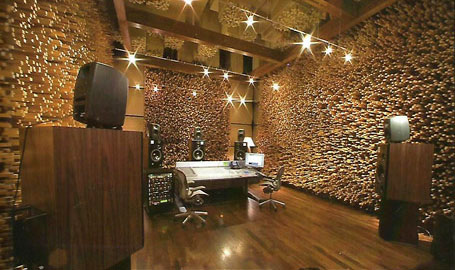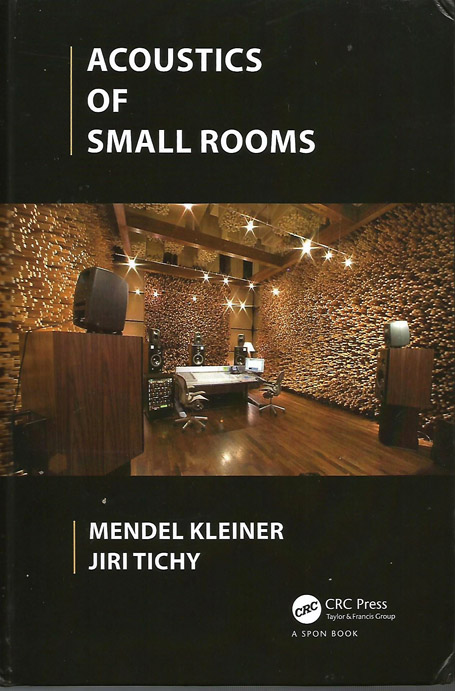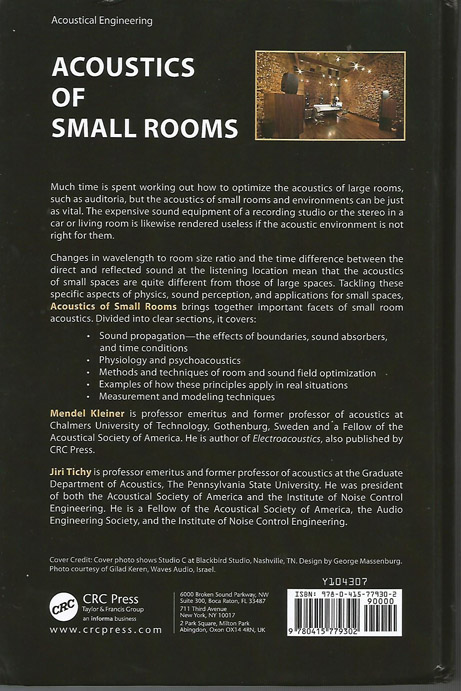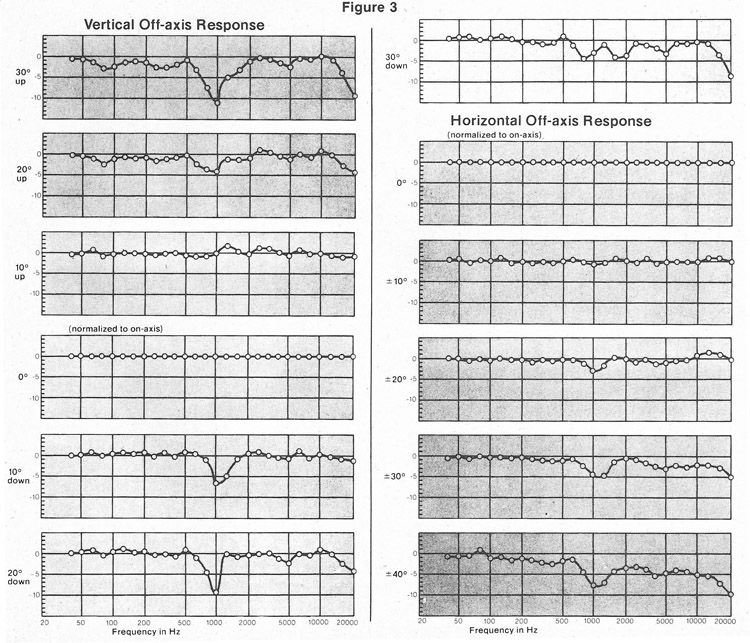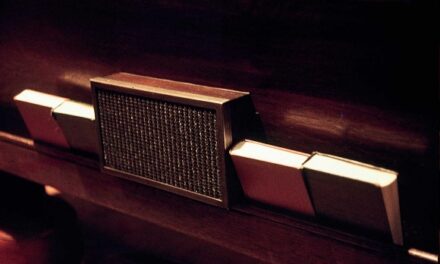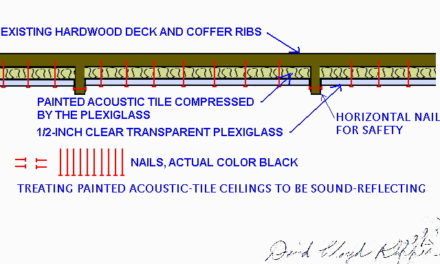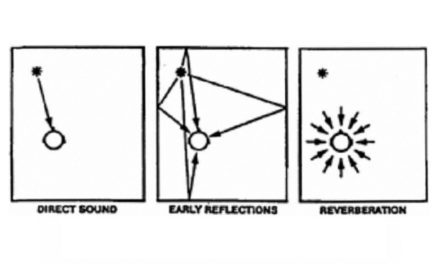“Much time is spent working out how to optimize the acoustics of large rooms, such as auditoria, but the acoustics of small rooms and environments can be just as vital.”
CRC Press (Taylor & Francis Group) 2013, 476 pages, hard cover, ISBN 978-0-415-77930-2
Reviewed by David Lloyd Klepper
Mendel Kleiner, emeritus professor at Sweden’s Chalmers University, now has a third book in two years,, this time as coauthor with Jiri Tichy, emeritus professor at Pennsylvania State University. The first was Acoustics and Audio Technology, for J. Ross Publishers, favorably reviewed in the June 2013 issue of Sound & Communications, and the second was Electroacoustics, for the same publisher as this book and reviewed on this website. The first book should primarily appeal to audio-acoustics people applying audio equipment for various purposes, the second for people designing microphones and loudspeakers, and this book should appeal primarily to designers and those seeking to improve recording studios, control rooms, home listening rooms, and music practice and rehearsal rooms. Although some information concerning classrooms, conference rooms and teleconferencing rooms is presented, more is required for design unless one thoroughly understands the physics and psychology that is presented in this book, and can apply them without examples and without warnings of potential and typical problems. In other words, this book is really two, an advanced textbook on acoustics in general and a book focused specifically on small rooms. Considering the advanced textbook aspect, it could serve as a college textbook for students who have already mastered basic physics and its mathematics, if the instructor supplemented the text with problems of his own creation or adapted from other texts, and provided some hands-on field and laboratory listening and measurement experiments.
Regarding the detailed design of the rooms specifically addressed in this review, the text makes clear that often the designer has to choose between alternatives For example, is it more important in a specific case to provide a nearby specular reinforcing reflection for a musician as preferred or to diffuse the reflecting surface and avoid coloration of the instrument’s sound?
The textbook information goes considerably beyond that required just for small rooms, and many matters discussed are applicable to large rooms, and in a few cases only to large rooms. There is a wide list of references for each chapter, far larger than other books covering this and related topics. The index format is a bit unusual, but works well once one adapts to it. There is no overall list of definitions, but all terms are well defined in chapter-specific lists or within the text, except the Kuttruff “Ratio of direct-to-reverberant sound, H” on page 266, referring to H. Kuttruff Room Acoustics, 5th Edition, Spon Press London, 2009. Clearly, this “H” is analogous to C50 and C80, Clarity, discussed in Kleiner’s previous books and in my articles on this website, but there are differences. Should not have “H” been defined and the correlation with Clarity made?
For the general reader, not directly involved in the acoustic design of small rooms, a test for the worth of this book would be how interesting is the article “Control Room Design For The Small Studio” by Woody Smith and Galen Carol on this website and its discussion of optimum room dimensions, and how great is the desire to understand thoroughly the physics and psychology behind the ideas of this article. If you have retained the knowledge learned in freshman college Physics and/or Calculus, the technical level should be appropriate for you. If this knowledge is lacking, a basic mathematics textbooks can be studied as used as a reference while reading this book
Although this book’s value is unquestioned, I wish there had been better proofreading and some critique of a few subjective comments that appear to oppose my own and others’ observations. On page 265, the sentence “There is no natural sound for a pure tone, for example, since such tones do not appear in nature” appears twice in the same paragraph, the first time without “natural” in italics. Note also the repetition of thought within the sentence, making the same thought said four times in this paragraph. Further thought suggests that the authors have here negated several types of bird calls. On page 363 we find the statement “Many musicians prefer tall, narrow stages because of the added support of the walls.” How tall, how narrow? Note the discussion of simulated reflections by loudspeakers in an anechoic chamber, and reflections on the dangers of such simulation as expressed in my article on speech clarity on this website. Many musicians have expressed happiness at the improvement in stage acoustics when suspended spaced sound-reflecting panels were introduced in such facilities as the Tanglewood Shed and the Kennedy Center concert hall.
On page 176, the second half of a sentence reads “…but in view of the lack of psychoacoustics studies, the deviation from perfect performance is not necessarily subjectively important.” This, to me, is faulty reasoning. The reason perfect performance is not necessary is that the application of diffusion is intended to correct specific problems, either echo, repeating echo (flutter), or coloration. Perfect performance isn’t necessary in practical cases, any more than a sound-absorbing coefficient of 1.0 for 100% absorption is essential where absorption is required.
Would a revised second edition change these very minor matters? Perhaps a bolder vision is appropriate, one that would have the book live up to the full promise of its title. Specific and detailed chapters would be added on classrooms, conference rooms, and teleconference rooms. John Bradley of Canada’s Building Research Station and/or L. Gerald Martial, my former partner, may be worthwhile partners in such an effort. Meanwhile, we can enjoy the wealth of information in the book as it is.
About the Reviewer
David Lloyd Klepper is currently a student of Rabbinics at Yeshivat Beit Orot, Jerusalem, Israel, having moved to Israel in 1996 from his position as President of Klepper Marshall King, White Plains, NY, Acoustical Consultants, and as Adjunct Professor of Architectural Acoustics at City University, New York City. Before 1971 he was a senior consultant at Bolt Beranek and Newman, starting his consulting career there in May 1957. He received his SM and SB degrees in Electrical Engineering from MIT, and between times served as Assistant Audio-Radio Member of the PsyWar Board at Fort Bragg, NC, during the Korean conflict, leaving active duty as a 1st Lt. He provided acoustical advice for over 200 worship space buildings, including the National Presbyterian Church, Washington, DC, St. Thomas Church Fifth Avenue, New York City, the Capetown, South Africa, Anglican Cathedral, River Road Baptist Church, Richmond, Virginia, Young Israel of Southfield, Michigan, and Boston’s Holy Cross Cathedral. In this capacity, he was a pioneer in application of digital delay and electronic simulation of reverberation in worship spaces, and pew-back speech reinforcement. Publications include 40 papers in professional journals, a coauthor with Professor Kleiner and Father Rendell Torris of the book Worship Space Acoustics, JRosspub.com., and Editor of the two Sound Reinforcement Anthologies of the Audio Engineering Society. He is a fellow of both the Acoustical Society of America and the Audio Engineering Society, past Emeritus Board Certified member of the Institute of Noise Control Engineering, and a member of both the American Guild of Organists and the Organ Historical Society. He also belongs to a number of railroad and public transit interest organizations. You may contact Klepper at ddaveklepper1@gmail.com.

